15 Long-Haul Travel Errors That Can Ruin Your Trip—And 2 You Should Watch For

Long flights promise adventure on the other side—but let’s be real, they can also test your patience, comfort, and planning skills.
I’ve learned the hard way that a little prep goes a long way when you’re stuck in a metal tube for 10+ hours.
From rookie errors like forgetting to move around mid-flight to sneaky pitfalls (hello, dehydrating in-flight snacks!), here are some of the most common mistakes travelers make on long-haul journeys—and two surprisingly overlooked issues that can throw off your entire trip.
1. Booking tight layovers
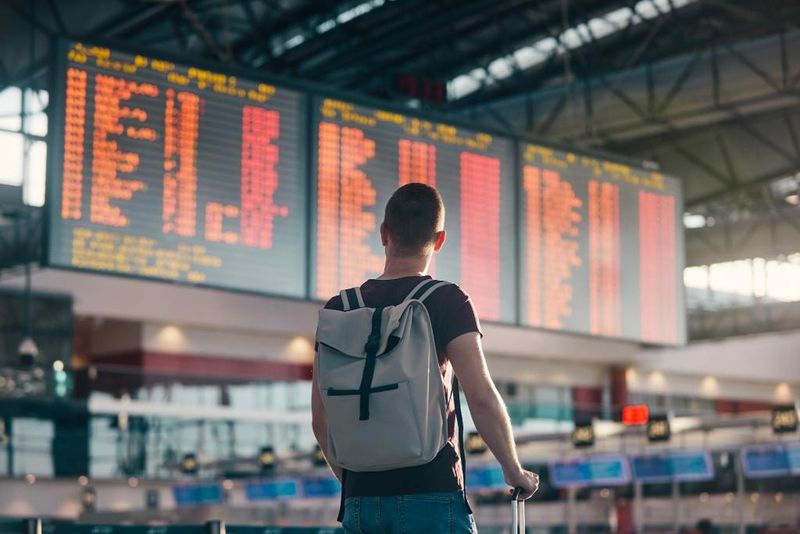
Racing through airports is no way to start a vacation. I’ve learned the hard way that 45-minute connections might look doable on paper, but they rarely account for delayed flights, long security lines, or terminals that seem miles apart.
International connections need even more time for customs and immigration. Aim for at least 90 minutes between domestic flights and three hours for international transfers. Missing a connection can cascade into lost hotel reservations and missed tours.
The small savings from booking that tight connection won’t feel worth it when you’re sleeping on an airport floor waiting for the next available flight!
2. Ignoring jet lag prep
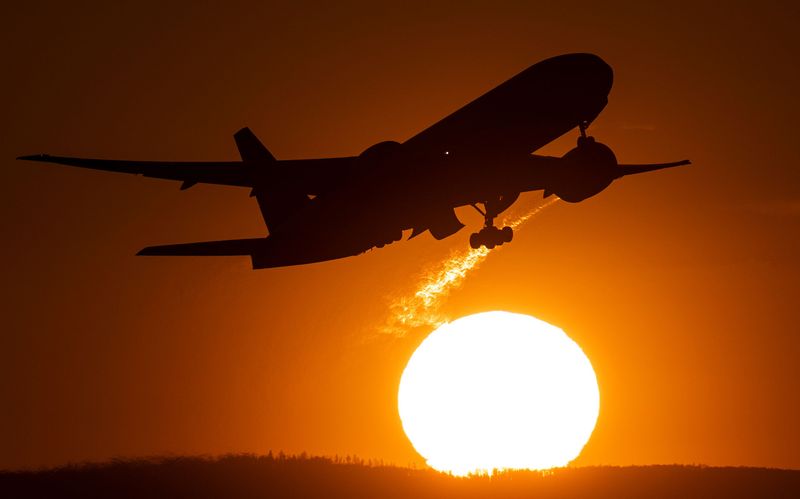
Jet lag can steal days from your vacation if you don’t prepare. When I traveled to Japan, I started adjusting my sleep schedule a few days before departure, shifting bedtime by an hour each night toward my destination’s time zone.
Hydration plays a huge role too – I always avoid alcohol and caffeine during flights. Setting your watch to the destination time as soon as you board helps mentally prepare for the shift. If arriving in daylight hours, try to stay awake until an early local bedtime.
A short 20-minute nap is okay, but sleeping longer will only prolong the adjustment period.
3. Overpacking your carry-on
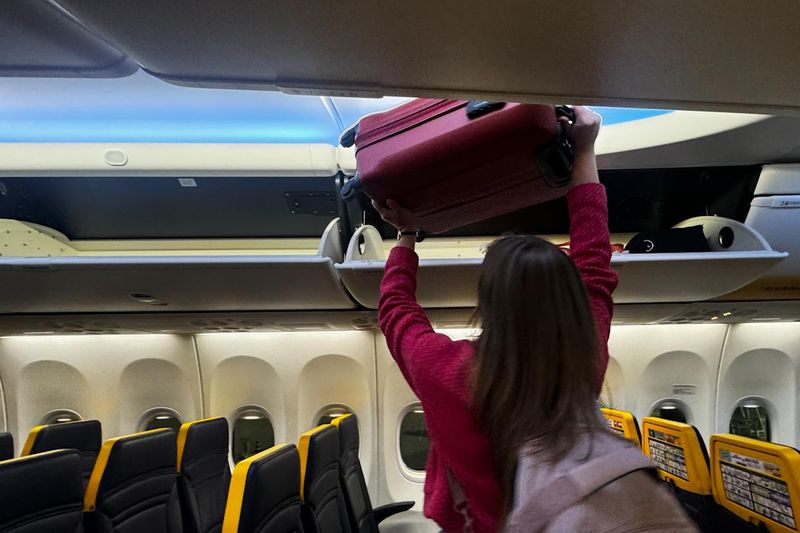
That bulging carry-on might seem like a good idea until you’re struggling to fit it in the overhead bin while a line of impatient passengers forms behind you.
Airlines are getting stricter about size limits, and some budget carriers will force you to check (and pay for) oversized bags at the gate. Heavy bags also become torture during unexpected long walks through terminals or during layovers.
I stick to essentials: one change of clothes, electronics, medications, and basic toiletries. Rolling clothes instead of folding saves space, while packing cubes keep everything organized and compressed. Remember, most destinations have stores if you forget something!
4. Not bringing entertainment
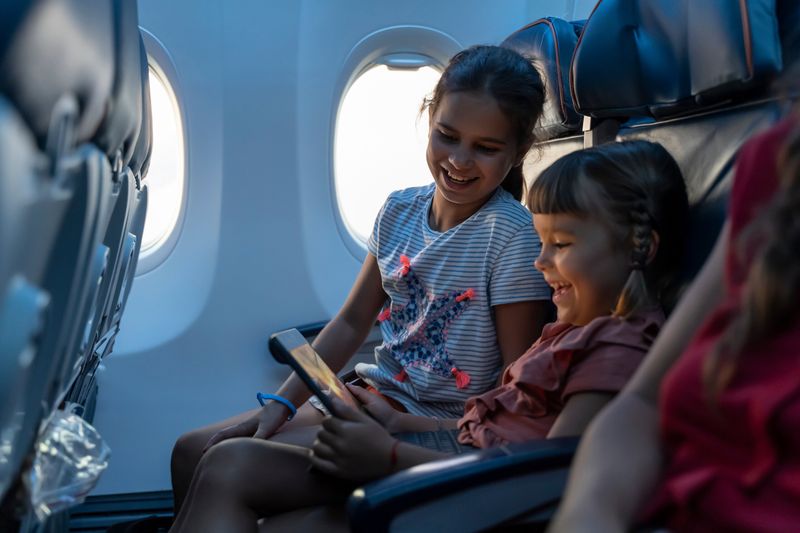
Twelve hours staring at the seat in front of you is pure misery. Even if your flight has entertainment systems, they sometimes malfunction or offer limited selections that don’t match your taste. I download movies, podcasts, music, and e-books before every long flight.
A tablet loaded with content has saved me countless times, especially on budget airlines that don’t provide screens. Don’t forget to pack a portable charger! Nothing’s worse than seeing your device battery at 10% with eight hours left in your journey.
Variety is key – mix up screen time with reading, puzzles, and even adult coloring books to prevent boredom.
5. Forgetting travel insurance

Medical emergencies abroad can be financially devastating. When my friend broke her ankle in Greece, her travel insurance covered the $22,000 in medical costs and emergency flight home – money she definitely didn’t have budgeted for souvenirs! Insurance isn’t just for health issues.
It can cover trip cancellations, lost luggage, and even emergency evacuation. The pandemic taught us how quickly travel plans can change due to factors beyond our control. Many credit cards offer some travel protection, but read the fine print carefully.
Dedicated travel insurance policies typically provide more comprehensive coverage, especially for international medical emergencies that your regular health insurance won’t touch.
6. Choosing the wrong seat

Seat selection can make or break your comfort on a long-haul flight. Window seats offer views and something to lean against for sleeping, but you’ll disturb others for bathroom breaks. Aisle seats provide freedom of movement but come with bumps from passing carts and passengers.
Exit rows offer extra legroom but often don’t recline and can be chilly. Seats near lavatories mean noise, odors, and constant foot traffic. I always check SeatGuru.com before selecting, as it highlights problem seats specific to each aircraft model.
For overnight flights, prioritize sleep comfort over convenience – that might mean paying a little extra for a better position.
7. Skipping hydration

Airplane cabins are incredibly dry environments with humidity levels lower than some deserts. This extreme dryness can leave you with headaches, fatigue, and increased jet lag symptoms – all terrible ways to start your vacation.
Bringing an empty water bottle through security and filling it before boarding is my go-to strategy. I aim to drink at least 8 ounces of water for every hour in the air. Alcohol and caffeine worsen dehydration, so I limit these severely during flights.
Hydration sprays for your face and saline nasal sprays can also help combat the desert-like conditions. Your skin, sinuses, and energy levels will thank you upon arrival.
8. Not checking visa requirements
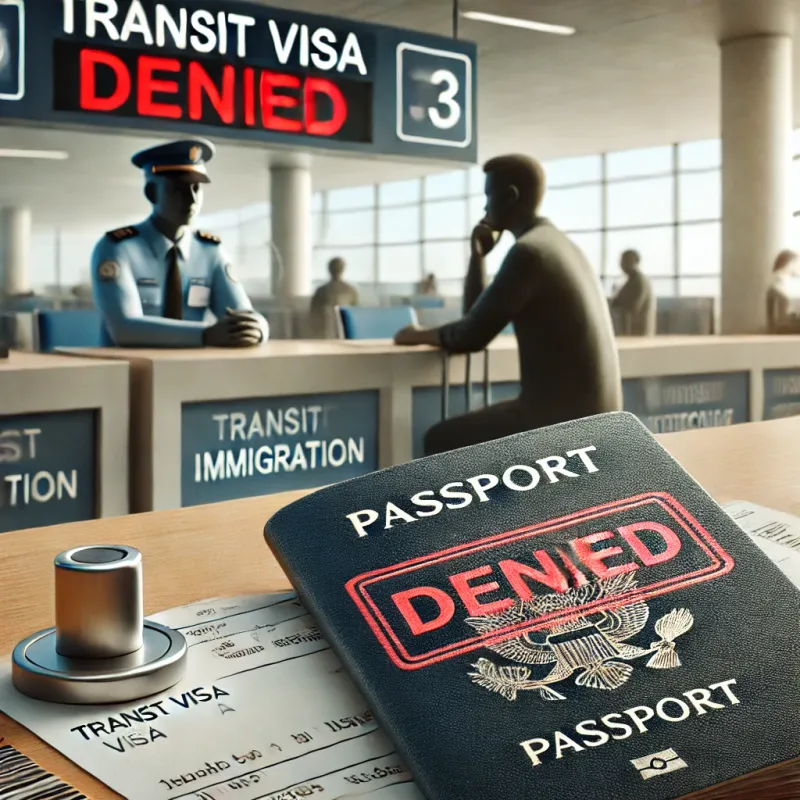
Visa surprises can end your trip before it begins. My colleague once arrived in Vietnam without realizing she needed a visa in advance – she was promptly sent back on the next flight after a 14-hour journey! Even transit visas matter.
Some countries require visas even if you’re just connecting through their airports. Requirements also change frequently, so checking a few months before might not be enough. Passport validity is another gotcha – many countries require six months validity beyond your planned return date.
I always verify requirements through official embassy websites or with specialized services like CIBT visas, never relying solely on outdated guidebooks or forums.
9. Eating heavy meals pre-flight
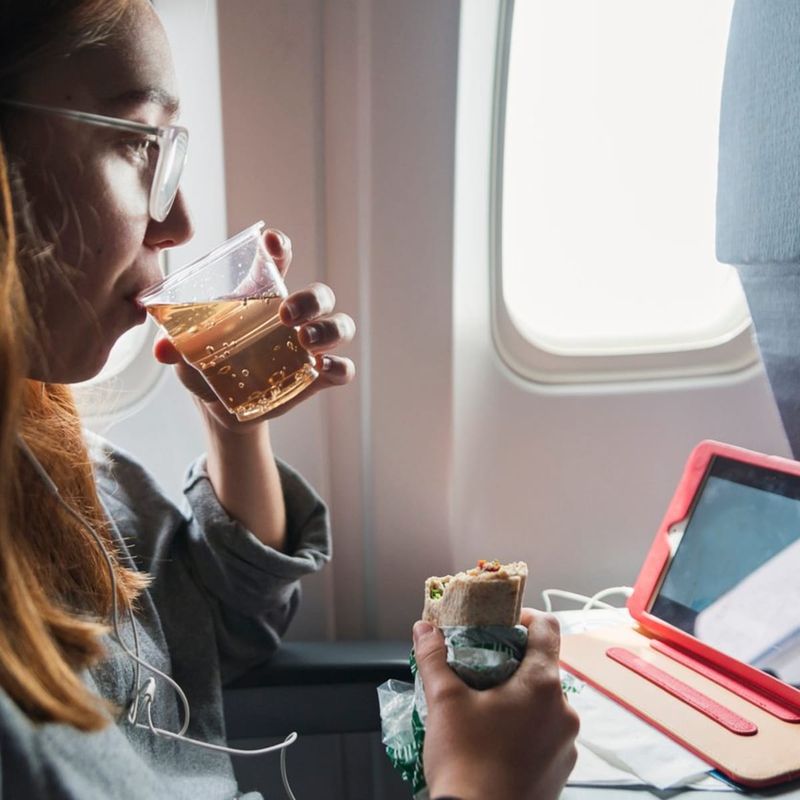
That giant burger and fries might seem like a good idea before boarding, but your digestive system disagrees. Heavy, fatty, or spicy meals before flying often lead to uncomfortable bloating and indigestion – especially problematic when you’re confined to a small seat for hours.
Air pressure changes affect digestion, making existing discomfort worse. I opt for lighter options like salads with lean protein, yogurt, or fruit before flights.
Eating at regular meal times according to your destination’s time zone can also help reset your body clock faster. If you’re truly hungry before boarding, a small protein-rich snack like nuts or a protein bar provides sustained energy without the digestive distress.
10. Wearing uncomfortable clothes

Fashion has no place on a 14-hour flight. I once wore jeans with a tight waistband on a flight to Australia and regretted it for 15 miserable hours as they dug into my expanding waistline (thanks, cabin pressure).
Compression during long periods of sitting can increase your risk of deep vein thrombosis. Loose, stretchy clothes in breathable fabrics like cotton or bamboo make a huge difference in comfort and safety. Layers are crucial for adapting to cabin temperature changes.
I wear slip-on shoes that accommodate foot swelling and compression socks for better circulation. Comfort truly trumps style when you’re trapped in a metal tube crossing oceans.
11. Not downloading offline maps

Landing in a new country without offline maps is like time-traveling to the 1990s. When I arrived in Bangkok at midnight, my phone had no service, the airport WiFi was down, and I had no way to navigate to my hotel. Google Maps, Maps.me, and other apps allow downloading detailed maps for offline use.
These saved maps include streets, landmarks, and even business information – all accessible without data. Beyond maps, I download offline translations, currency converters, and important addresses before departure.
Having digital copies of reservations, passport scans, and emergency contacts stored offline has saved me numerous times when connectivity failed. These small preparations prevent those first stressful hours in a new place.
12. Leaving power banks at home

Modern travel runs on battery power. My nightmare scenario happened in rural Portugal when my phone died while I was using it for navigation, translation, and hotel confirmation – all at once! Power banks are travel lifesavers, especially during long travel days when outlets are scarce.
I always pack at least one 20,000mAh bank, which can recharge my phone multiple times. Remember to keep power banks in carry-on luggage, as they’re not allowed in checked bags. Also, verify that your power bank complies with airline regulations – most have capacity limits.
Multiple smaller banks can be better than one huge one for both regulatory compliance and weight distribution in your bag.
13. Relying solely on airline food
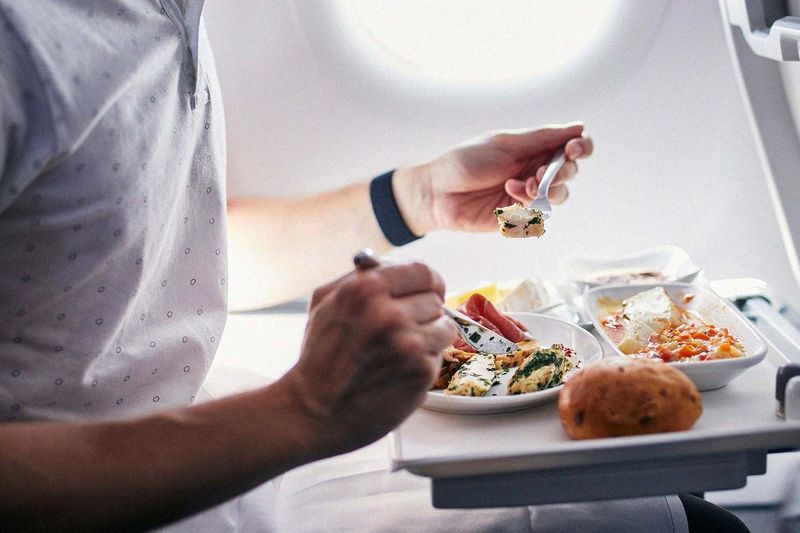
Airline meals aren’t known for their culinary excellence or timing. Flights can be delayed, meal service might not align with your hunger, and special dietary needs are sometimes forgotten despite advance requests. I always pack non-perishable snacks like nuts, granola bars, and dried fruit.
These have saved me during unexpected delays and when the mystery meat option looked particularly questionable. If you have dietary restrictions, bringing your own food isn’t just about taste – it’s about necessity.
Many international airports have surprisingly good food options after security, so I often grab a quality sandwich or salad to bring onboard instead of gambling with airline offerings. Your taste buds and stomach will thank you.
14. Ignoring local customs

Cultural missteps can range from embarrassing to actually dangerous. In Thailand, I almost patted a child on the head – a major taboo that would have deeply offended the family – before a local friend stopped me.
Research basic customs before arrival: appropriate greetings, tipping practices, dining etiquette, and clothing requirements for religious sites. Hand gestures that are innocent at home can be highly offensive elsewhere. Photography rules vary widely too – some cultures consider taking photos without permission extremely rude.
Learning just a few local phrases shows respect and opens doors. “Please,” “thank you,” and “excuse me” in the local language can transform how you’re received in a new country.
15. Not bringing noise-canceling headphones
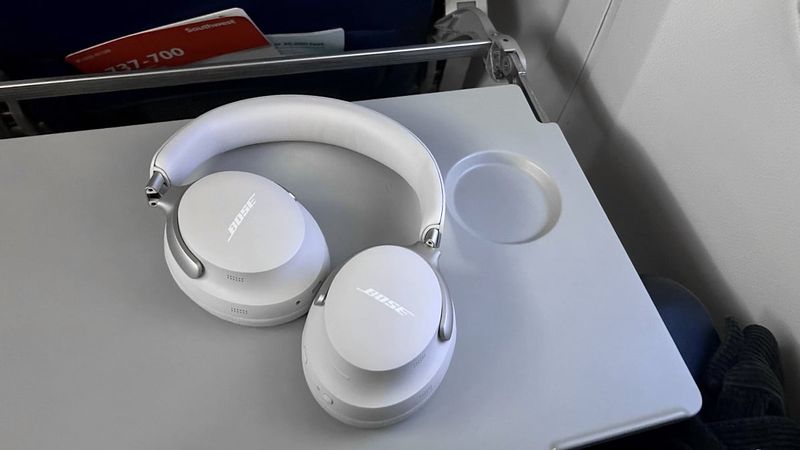
Regular headphones are no match for jet engines, crying babies, and chatty neighbors. After experiencing a 12-hour flight seated near a colicky infant with only earbuds for protection, I invested in quality noise-canceling headphones and never looked back.
Beyond entertainment, these headphones significantly reduce the fatigue caused by constant background noise. The difference in how rested you feel after a long flight is remarkable.
They’re useful beyond the flight too – blocking street noise in hotel rooms, creating a bubble of calm in busy terminals during delays, and providing better audio quality for movies and music throughout your trip. This is one travel splurge that pays dividends in mental well-being.
16. Trusting airport Wi-Fi (watch for)
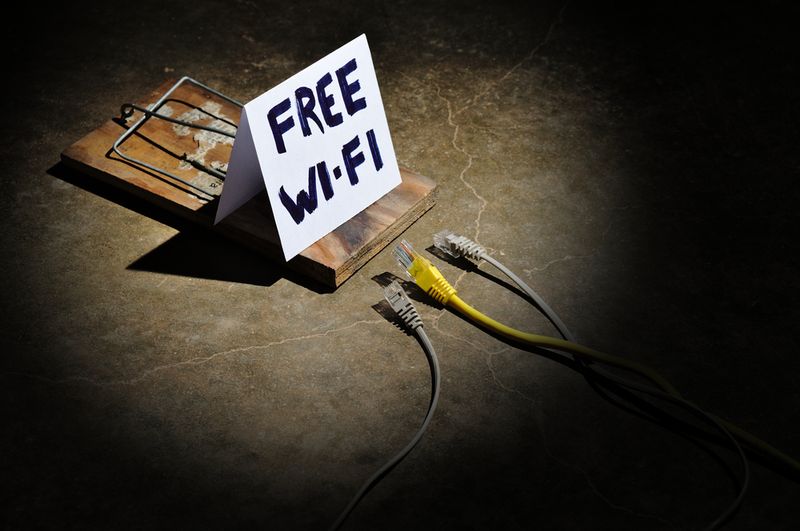
Free airport Wi-Fi seems like a traveler’s best friend, but it can be your security’s worst enemy. These networks are prime hunting grounds for hackers who create convincing fake hotspots or intercept data on legitimate but unsecured networks.
I’ve seen travelers checking bank accounts and entering credit card details while connected to “Free_Airport_WiFi” networks with no password protection. This is essentially broadcasting your sensitive information to anyone with basic hacking skills.
Always use a VPN when connecting to public Wi-Fi, and avoid accessing financial accounts or entering passwords if possible. Consider using your phone’s cellular data for sensitive tasks instead. Better yet, handle important financial matters before your trip.
17. Leaving valuables in the seat pocket (watch for)
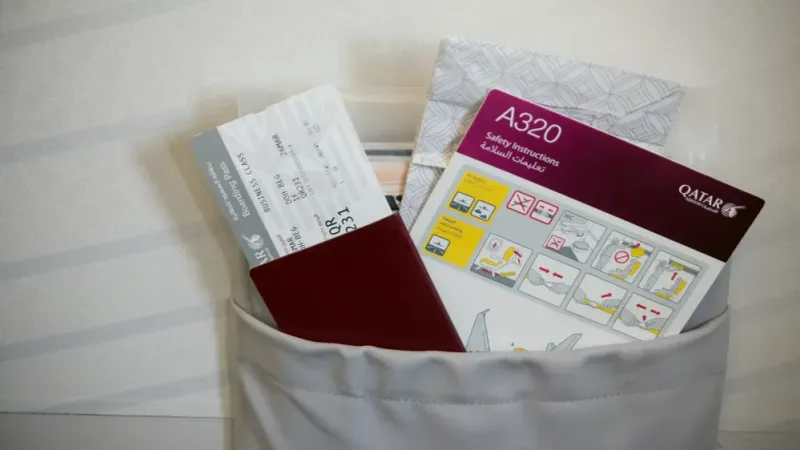
That convenient seat pocket is also the black hole where passports, phones, and headphones disappear forever. After 15+ hours of travel fatigue, it’s remarkably easy to walk off the plane without checking this sneaky storage spot.
Flight attendants report that seat pockets are the number one place where valuable items are forgotten. I’ve made it a habit to never use them for anything I can’t afford to lose. If you must use the seat pocket during the flight, create a departure checklist that includes checking this spot before standing up.
I set a distinctive alarm on my phone labeled “CHECK SEAT POCKET!” that goes off when we land. This simple reminder has saved my passport more than once.
